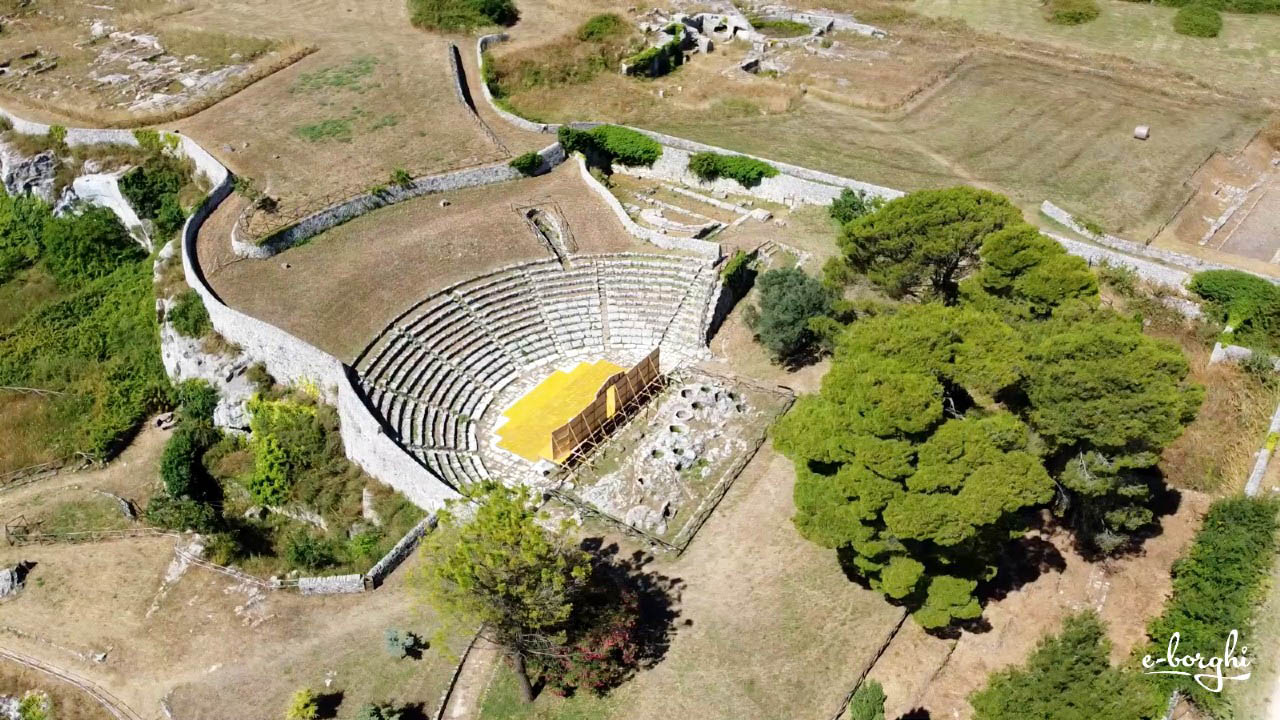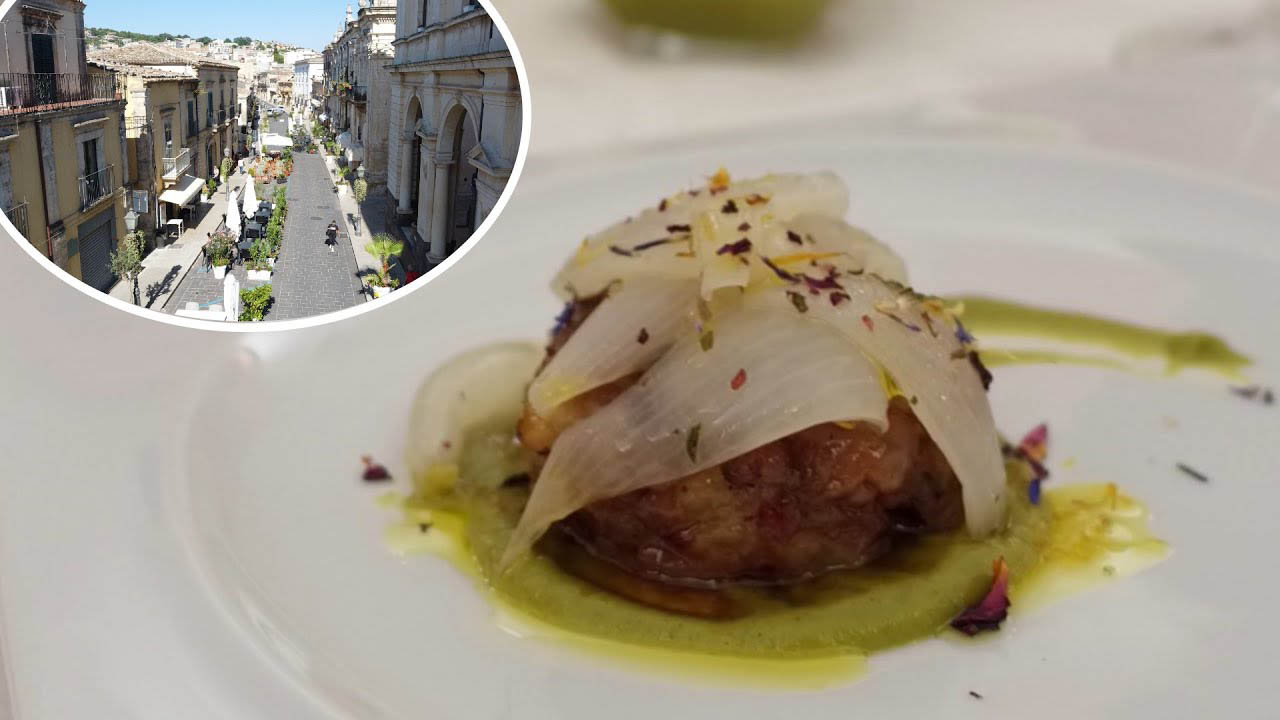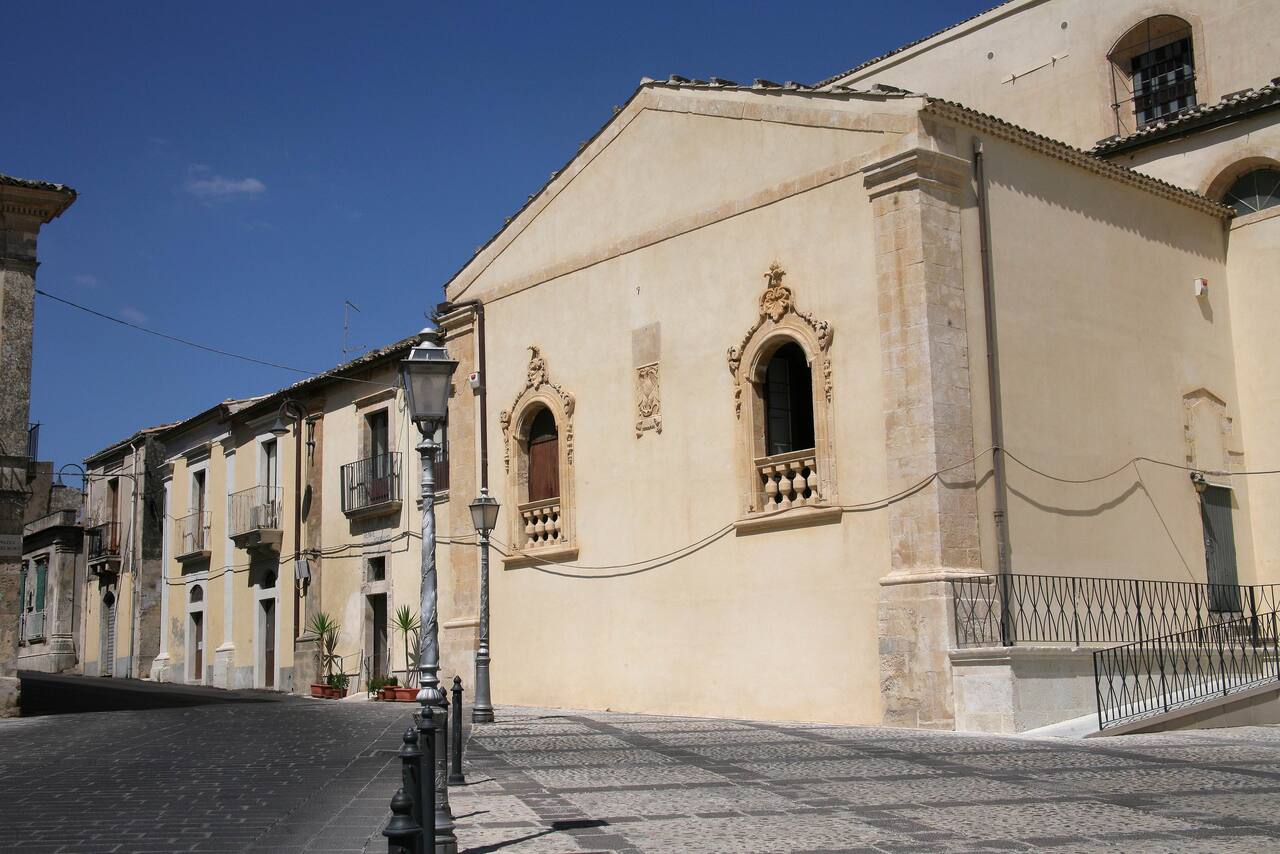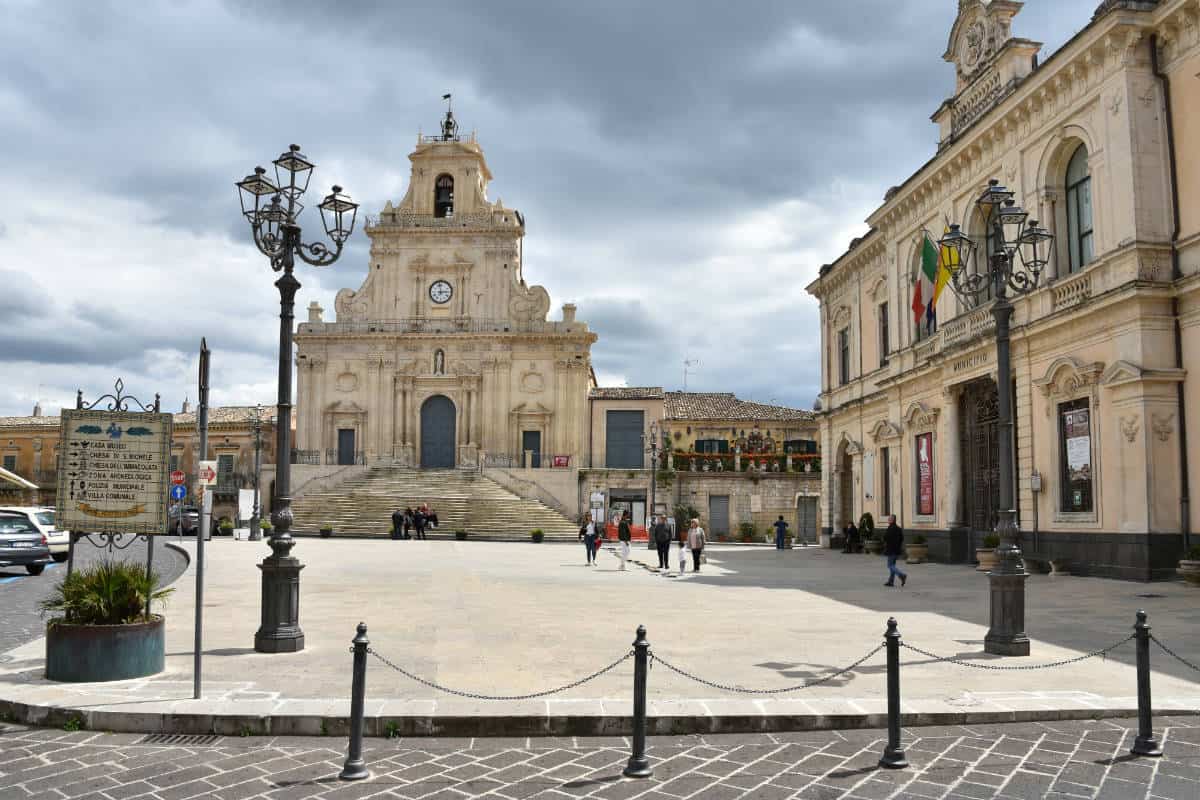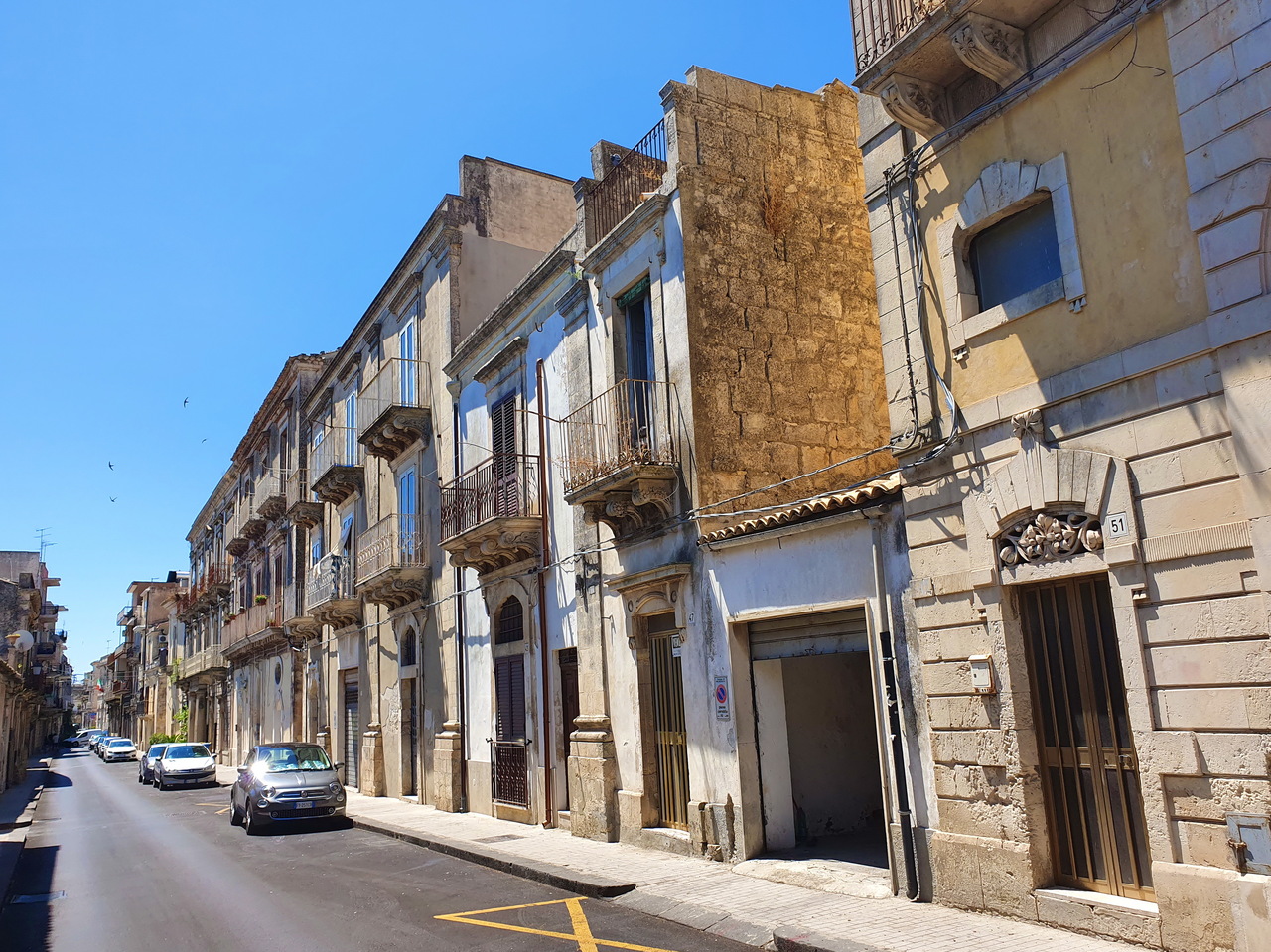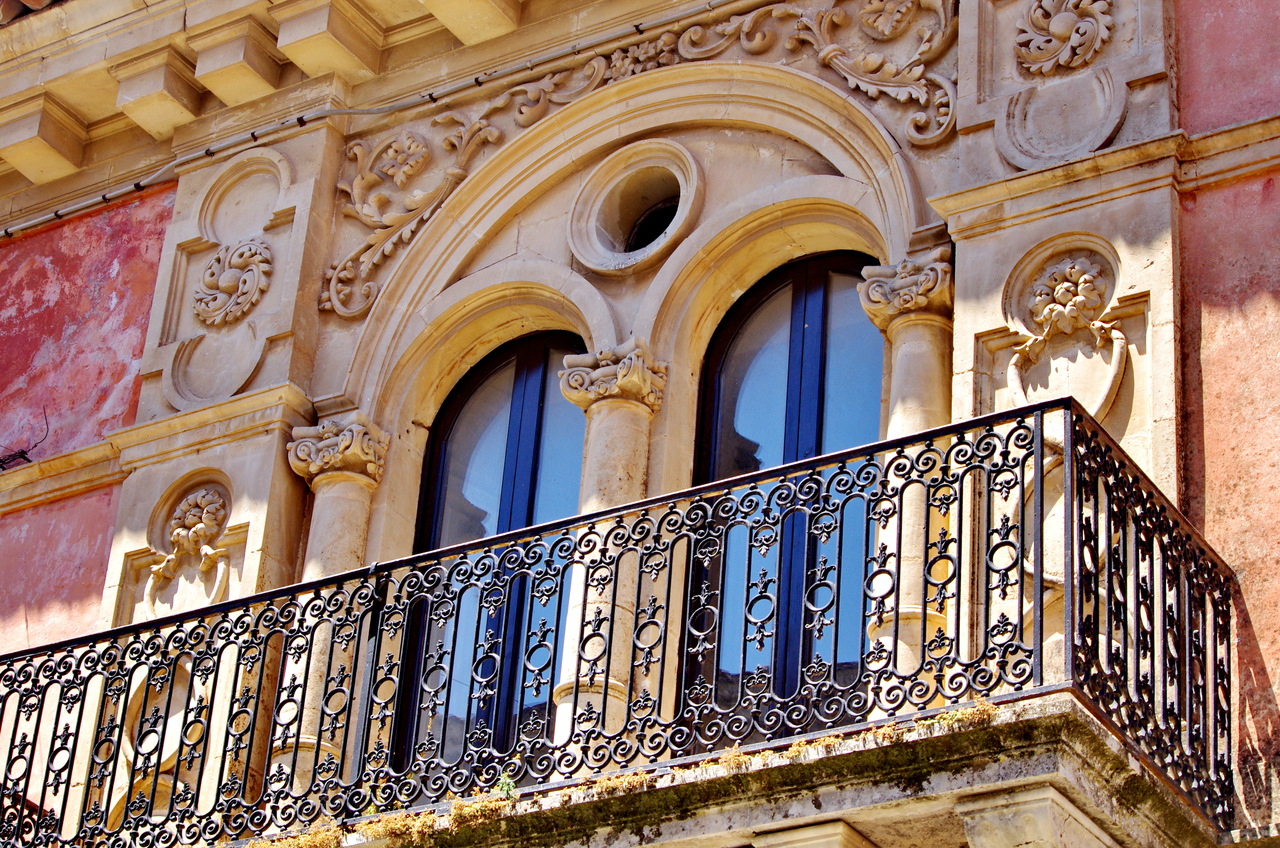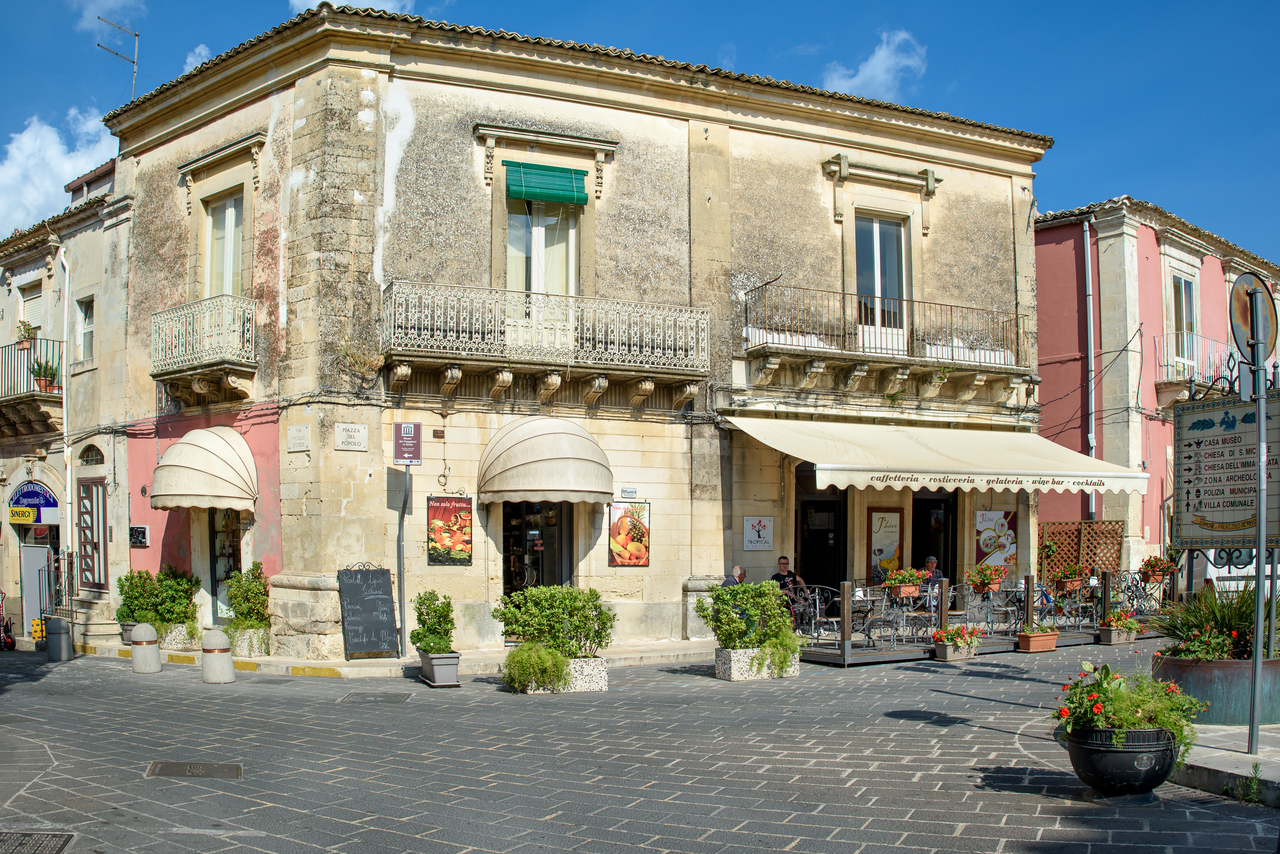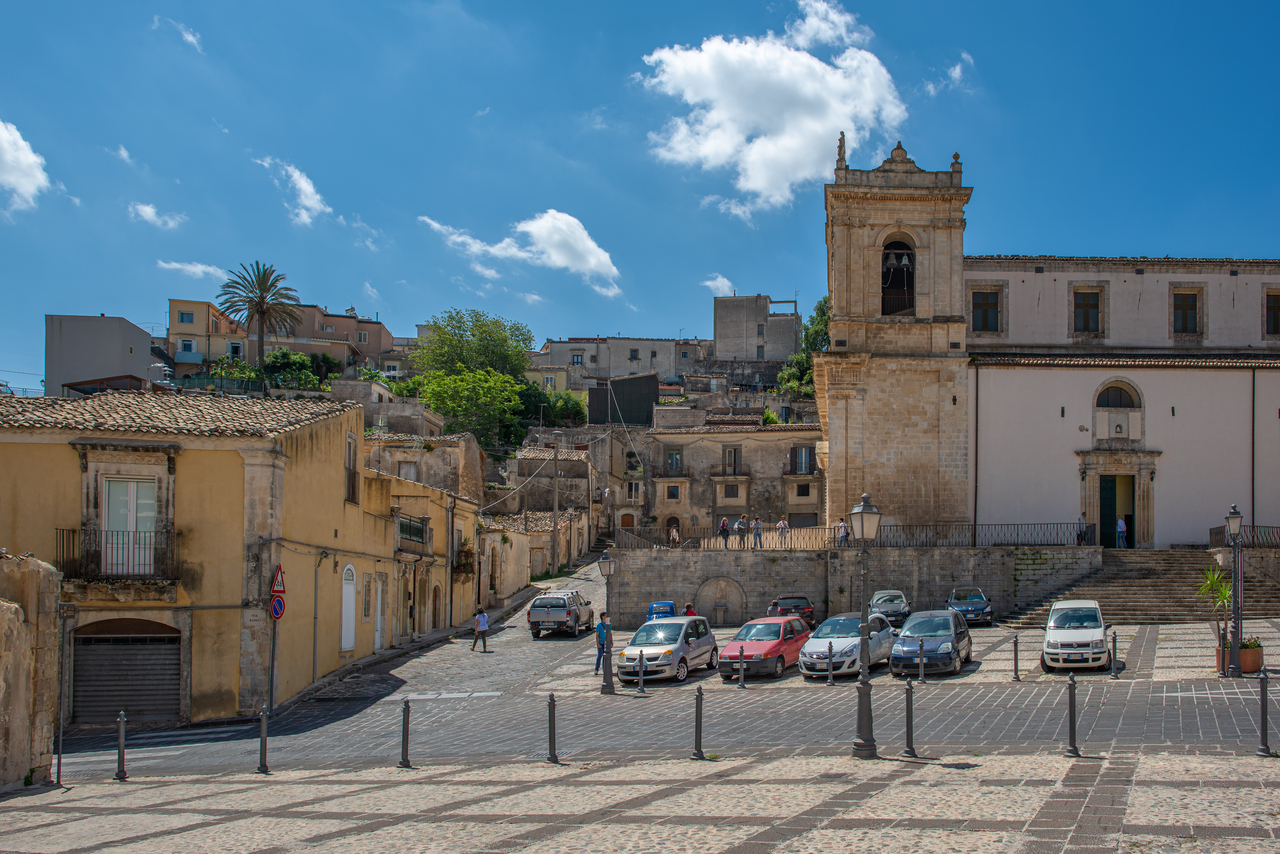Palazzolo Acreide
- Village in the mountain
- UNESCO heritage
- Suitable for disabled people
- Camper parking area
- Most beautiful villages in Italy
Exclusive video
About the village
In 664 a.C., on the hill called Acremonte, which separates the valleys of’Anapo and of Tellaro, the Syracusans founded Akrai. This place even before being appreciated by the Syracusans was chosen by the Siculians, you raised a real village around the XII century numerous were the dominations that were avvicendarono over the centuries: Greek, Roman, Byzantine, Arab, Norman. From here the various names given to the cityà in different eras: Akrai, Balansùl, Placeolum or Palatioli, and finally Palazzolo to which, in 1862, was added the patronymic of Acreide.
The first historical news of Palazzolo Acreide current you have from the XII century. The medieval center was erected close to the ancient Acre, on a small rocky outcrop below, in a strategic position of control over the territory and the roads, Là where once stood a "palatium" imperial, which has given the name of the new village: "Palatiolum". Here a castle was erected by the Normans. From 1104 it avvicendarono in Palazzolo different baronie: from Guilfredo son of Count Ruggero to Artale d'Alagona, to finish the principles Ruffo di Calabria. In the XIII-XIV century the demographic increase determinationò expansion of the town in the surrounding area. Destroyed by the earthquake of 1693, the cityà it was rebuilt in part on the original structures of the medieval quarter and in part around the actual main course. In the XVII century the palazzolesi rebelled to feudalism until in 1812 Palazzolo was recognized as a country demaniale. The Iblei Mountains and the valley of’Anapo are natural and evocative setting to the territory of Palazzolo Acreide.
The valley, crossed by the river of the same name, a rich vegetation with spots of shrubs and oriental platani, preserves the natural reserve and the necropolis of Pantalica. They deserve to be mentioned also the quarries of Cardinal and the forest of Bauly, interesting for flora and fauna. The baroque, climate, popular traditions, gastronomy, cordialityà and L’hospitalityà people make this town, a methà not to miss. Palazzolo è a village not only to visit but to live for the history and charm, for the many beauties by love, for its churches, for its palaces and its evocative districts.
The church of San Michele was built between the XV and XVI and rebuilt after the earthquake in 1693, the facade rises on a staircase and develops on two orders. Stands out left the bell tower hexagonal enclosed by a dome.The internal is divided into three naves with columns of white stone to smooth drum surmounted by Corinthian capitals.
The church of Sant’Antonio Abate was built in 1634, destroyed by the earthquake of 1693 è was rebuilt in ‘700, but it's never been completed. The facade è incomplete: lacks the second bell tower, while it was built only the central nave and a part of the right aisle. You can admire several beautiful canvases in the altars.
The church of Immaculate, from’elegant baroque facade convex, unique in its kind in Palazzolo, preserves a statue in white Carrara marble of the Madonna col Bambino, a Renaissance masterpiece built between 1471 and 1472 by the sculptor Dalmata Francesco Laurana.
The church of S. Francesco è L’ancient church of the Capuchins. Rebuilt after the earthquake of 1693, has been reopened for worship in 1984. In its interior, with a single nave, is guarded a wooden altar with the statues of Capuchin saints and the statue of S. Francis.
The construction of Church Convent began in 1870, the complex and the ancient monastery was suppressed in 1866. The Church è a single nave, in the sacristy is guarded a valuable eighteenth-century cabinet in walnut-tree with inlays in cypress tree that was found in the old convent. The church also holds the manuscript “La Selva of historical news” Father Giacinto Farina.
The church of Maria SS. Del Soccorso è devoid of works and decorations, but has a charm austere. Rebuilt after the earthquake of 1693, recently reopened for worship. Of the original structure, remain a precious holy water stoup in marble and stone floors paved.
The Palazzo Lombardo Cafici is located along via Garibaldi, dates back to the XVIII century and boasts the mostù long baroque balcony of the world. The corbels depict anthropomorphic mascheroni with vivid expressions grotesque.
The Museum of travellers in Sicily collects at Palazzo Vaccaro the original engravings, concerning’iblea area, of più important Voyage Pittoresque ‘700, ancient maps of Sicily and a valuable collection of ancient books related to the theme of the journey including the rare first edition of De Rebus Siculis of Fazello. The Palazzo Rizzarelli Spadaro is the seat of the Museum of the noble traditions.
on vast Piazzale Marconi is located the Villa Comunale, desired and realized by the barons Judica and Messina, its construction beginningò in 1880. Inserted between the historical gardens of Italy by the Ministry for Cultural Heritage, has an extension of 30,000 sqm. And è a veritable botanic garden for the variety of trees and flower essences. It's characterized by four spacious long boulevards lined by secular ornamental trees, some of which are very rare.
The Castle Medieval existed GIà In’827, the year of the muslim conquest, abandoned after the earthquake of 1693, remain only some ruins: part of the ditch, the base of the towers, some local hypogea, tanks and in baglio small part of crenellations carved in the living rock. From the site, you can enjoy a view over the valley of’Anapo of unparalleling beauty.
The district “i scaliddi” has its name because of a series of stairs, diramatesi in different directions and then rejoin, puts into communication the districts of “San Paolo” and the “The Holy Spirit”, that are located in the “Low” the cityà with those of “San Michele”,’ “Clock” and “San Sebastiano” which are in the “High” the city. The stairways, some very evocative, overlook the beautiful valley of’Anapo, from here you canò enjoy a vast panorama that extends up to’Etna. This district is one of the most ancient and currently valued only on the occasion of the “Living Crib”, in the month of December.
Village of Palazzolo Acreide
Municipality of Palazzolo Acreide
Province of Siracusa
Region Sicily
Inhabitants: 8.808
Altitude center: 670 m a.s.l.
Unesco site:
late baroque cities of the Noto Valley
Municipality is part of:
I Borghi più belli d'Italia
cultural district of south east Sicily
The Wine Road of the Noto Valley
Cities and world heritage sites Unesco
Municipality
Piazza Del Popolo Palazzo 1 - tel: 0931871111
8.33 Kilometers from Palazzolo Acreide
8.34 Kilometers from Palazzolo Acreide
8.43 Kilometers from Palazzolo Acreide
8.51 Kilometers from Palazzolo Acreide
8.58 Kilometers from Palazzolo Acreide
8.65 Kilometers from Palazzolo Acreide
34.78 Kilometers from Palazzolo Acreide
8.34 Kilometers from Palazzolo Acreide
12.95 Kilometers from Palazzolo Acreide
15.24 Kilometers from Palazzolo Acreide
15.24 Kilometers from Palazzolo Acreide
34.58 Kilometers from Palazzolo Acreide
BY CAR
- From Syracuse: take provincial road 14 "Maremonti" towards Canicattini Bagni.
- From Ragusa: take the Statale "194" to Giarratana and then continue on the provincial 23.
BY PLANE
- Catania airports
- Palazzolese sausage. The sausage Palazzolese is a pork sausage swine, typical of our territory. It is usually produced by filling a natural casing of pig together with spices, salt and chili pepper; with a mixture of lean parts (for example shoulder) diced (or chopped). To the slurry così obtained is added usually wine (predominantly red). Può be consumed fresh (after cooking) or dry (then seasoned).
- “Cavatieddi”. A traditional pasta palazzolese, hand machined and formed with a dough of flour, water and a pinch of salt, have an elongated shape with a recess inside. Are enjoyed and served with ragù, or most typically with a sauce made from pork and represent the regional dish par excellence.
- ricotta ravioli. in Palazzolo preparation is made by hand, for example with the help of a cup which allows to obtain a circular shape, filled in followed by a spoonful of ricotta cheese seasoned with parsley, black pepper, nutmeg, grated parmesan cheese and eggs. They are dressed with a sauce of fresh tomatoes or tomato sauce of pork.
- Caponata. this is a set of fried vegetables (mostly aubergines), seasoned with tomato sauce, celery, onion, green or black olives, capers, carrot, garlic and chili pepper in sweet and sour sauce. The caponata palazzolese è generally used as a side dish or appetizer. The etymology derives from "capone", name with which in some areas of Sicily is called the 'dolphinfish', a fish from quality meat. The people cannot afford the expensive fish, the replaced with inexpensive aubergines.
- jelly pork. obtained from the residues of pork products, is prepared using the poor parts of the pig, as the rind, legs, head, tail, language and ears. The meat is made to boil for a few hours in salted water with bay leaves. The broth is then added lemon and vinegar and boiled again for half an hour. You then add spices such as pepper, chili pepper; the gelatin obtained is consumed cold and could be kept for a few days.
- Black Pig. The piglet black is a native breed of Sicilian territories. The race has a small size and is characterized by the fur of black color; Of wild origin is bred in the wild state and left free to wander through the woods, feeding of the fruits of nature. Generally the black pig is cooked in the oven or grilled and Può be used also for the preparation of typical salami.
- Black Truffle. the black truffle is wrinkled appearance, dark and with small warts, with clear veining and thin, of variable size between that of a walnut to that of a grapefruit, and emanates, like the other varietyà the family, an intense perfume characteristic. This is one of the traditional Agri-foodstuffs that we find in the vicinity of the Bosco di bauly, at 5 km from Palazzolo. It is tasted in meat, in pizza and pasta.
- hot ricotta cheese. ricotta is a dairy product, namely a latticinio, but it can't be defined cheese because is not obtained through the coagulation of casein, but from the whey proteins of milk, the liquid part of the milk that separates from the curd. The ricotta is even the basic element of many recipes palazzolesi as cannoli, ravioli, the lumere and the Sicilian cassata (strictly ricotta cheese of sheep). The ingredients to produce ricotta are serum and salt.
- salted Ricotta. the salted ricotta is a variety of ricotta cheese produced and appreciated in particular in southern Italy. Differs from fresh ricotta cheese to be more "dry" and for a taste and texture more marked. It produces floculare leaving proteins and albumins present in the serum of milk. The salting occurs almost exclusively by hand with coarse sea salt. The dry ricotta in trade is produced primarily with whey of sheep and is used as a product from the table to grate.
- Eggplant Parmigiana. The term parmesan derives from the Sicilian word parmiciana. Generally it is prepared with aubergines, caciocavallo cheese, ham, tomato sauce, boiled eggs, basil leaves, grated parmesan cheese, extra virgin olive oil d’olive oil, salt and chili.
- pork steak. The staek of pork is a type of steak palazzolese typical, usually cooked on the grill, the meat of which originates from the cutting of the cost of the pig. The cooking of meat usually takes place through the living flame on the grid, but Può be cooked even on plates preheated. Typical of our country is even the cost filled.
- rissoles potatoes. the rissole potatoes is a dish usually based on potatoes, eggs, parsley, breadcrumbs and grated parmesan. Once prepared the dough, take via many small portions which are squeezed and worked by hand, until reaching the characteristic rounded shape. They are cooked fried in abundant oil and generally are served at the table as a second flow rate.
- Arancino. It is a ball of fried rice cake filled with ragù, mozzarella and peas. The name derives from the shape and the color typical, reminiscent of an orange. In the eastern part of the island the arancini can also have a conical shape. There are in fact the recipes of the arancino which provide, in addition of course to the rice, the use of mushrooms, sausage, gorgonzola, salmon, chicken, sword fish, seafood, pesto, as well as sepia.
- Canestrato of Nebrodi. Canestrato sicilian is also called Canistratu, Picurinu Tumazzu or Canestrato derives its name from the wicker basket in which it is seasoned for a period more or less along. For its production is used whole cow's milk, sheep or mixed. The curd is put in “fasceddi”and pressed by hand, after is subjected to dry salted or in brine. Has fresh and pleasant taste.
- Sicilian cannolo. consists of a pod of pasta and a stuffed with ricotta cheese of sheep is sieved and sweetened. For the peel, form small disks of dough (made of wheat flour, wine, sugar and lard) which are rolled up on small metal tubes and then fried. There are also other fillings, as the custard cream or chocolate cream. The stuffed cannolo is then dusted with icing sugar.
- Cassata Siciliana. traditional cake with a basis of sweetened ricotta cheese of sheep, sponge cake, marzipan, candied fruit and icing sugar. There are countless local variations, especially appearance Può vary from a minimalist decoration of icing and a little candied orange peel up to one with colored beads and half a dozen of candied fruits different. There may be additional ingredients such as pistachio, pine nuts, chocolate, cinnamon, maraschino or water of zagara.
- “Pignuccata” Sicilian Pignolata (honey). very similar to the Struffoli (small traditional fritters), from which it differs for the form at Pigna and fried in lard, also present in the slurry. It is traditionally used during the carnival festivities. The sweet is made by circles of dough fried and covered with honey. Recently you use add colored sugar to decorate the cake.
- “Giuggiulena”. typical Christmas cake whose main ingredient is sesame, in Sicilian is indicated with the term giuggiulena. The recipe is based on the composition of sesame seeds paid in honey and fixed by the caramelization of sugars (in an enriched version will also add almonds and peels of candied orange), in the manner of a nougat. Requires a very long preparation with a rest of twenty-four hours.
- “Lumere Cassateddi or ricotta” (Cassatelle). unlike Cassata, Cassatelle are prepared with fresh pasta stretch of about ten centimeters in diameter and sweetened ricotta cheese. They are cooked in the oven and you can eat warm. In the sicilian tradition the cassatelle are preparing for Easter and for this reason are called Cassatelle Easter.
- Fruit Martorana. its preparation and its packaging envisages, in form and looking at the end of the process of preparation, the perfect imitation or reproduction of fruits and sometimes vegetables or fish. Internally is similar to marzipan but considerably moreù sweet and tasty. The basis of his recipe is exclusively almond flour and sugar.
- almond biscuits. the almond paste constitutes one of the most sweet representative of eastern Sicily, where master pastry chefs work the almond in an artisan way. The almond biscuits are prepared by mixing powdered sugar and egg until obtaining a uniform mixture. A part mix instead almonds, lemon, vanilla and cinnamon, to go così to create cookies which will then fired.
- chatterbox. Typical sweets of the carnival, have the shape of a strip, sometimes manipulated to form a node (in some areas are in fact the name of bows). They are made with a dough of flour that is fried or cooked in the oven and then dusted with icing sugar.
- Sponge Cake. The dough of the sponge cake is prepared from cold mixing in a bowl little flour or starch potatoes, sugar, egg yolks and egg whites mounted to snow the firmest. The preparation of the sponge cake is simple even if not too fast becauseé requires a time of approximately 60 minutes. The Sponge Cake is a recipe very used in the kitchen for the preparation of delicious sweets, especially cakes as the Sicilian Cassata.
- Jam of Quince.
- Mustard. Its peculiarity is in its ingredients: wine and ash. To these characteristic ingredients are added starch or flour, sugar, roasted almonds and/or walnut kernels and some rinds d’orange dried and shredded.
- May - International Festival of the Young Classic Theater at the Greek Theater of Palazzolo Acreide. Young students from all over the world will compete in the natural stage of the Greek Theater of Akrai putting in scene in their language d’origin tragedies and comedies ancient.
